Globalisation is not dying, it’s changing
Trade in goods may be slowing, but the potential for technology-enabled trade in services remains huge
Martin Wolf
What is the future of globalisation?
This is among the biggest questions of our time.
In June, I argued that, contrary to increasingly widespread opinion, “Globalisation is not dead.
It may not even be dying.
But it is changing.”
Among the most important ways in which it is changing is via the growth of services provided at a distance.
Since the industrial revolution, we have, argues Richard Baldwin in his book The Great Convergence, seen three waves of opportunities to trade.
First, industrialisation and the revolution in transport generated opportunities for trade in goods.
More recently, new information technologies allowed “trade in factories”: it became profitable to move entire factories to where labour was cheap.
Today, however, the broadband internet allows “trade in offices”: if one can work for one’s employer from home, someone in India can do so, too.
Moreover, an important difference between the first and second waves, which need movement of objects, and the third, which moves information virtually, is that obstacles to physical trade are far easier to impose than those to virtual trade.
It is not impossible to impose the latter, as China shows.
But it requires great effort.
As Baldwin argues in four recent blogs, this analytical framework allows us to view the future of trade in a different light from the one now fashionable.
In particular, what he calls the “lazy” view of the history of globalisation and trade is misleading on a number of dimensions.
What then is that view?
It is that after some two decades of very rapid growth, world trade in goods peaked in 2008, under the mortal blow of the financial crisis, as the world turned away from trade.
First, the trade ratio of the world’s second largest trader of goods, China, actually peaked before 2008 (in 2006).
Those of the third and fourth largest goods traders, the US and Japan, peaked after 2008 (in 2011 and 2014).
The ratio of the largest trader, the EU, has not peaked, though it has stagnated.
Second, the biggest fall in the trade ratio is in China. But this does not reflect protectionism abroad or a deliberate turning away from trade by China itself. China has merely normalised reliance on trade relative to its economic size.
Third, in money terms, the biggest cause of the declining trade ratio was the fall in the price of commodities, not a reduction in the volume of trade.
This price fall accounted for 5.7 percentage points of the 9.1 percentage points decline in the ratio of goods trade to world output between 2008 and 2020.
Finally, there is indeed evidence of an unwinding of cross-border supply chains, but the turning point seems to be in 2013, after the financial crisis, but before the election of Donald Trump.
A principal explanation is the shift of supply chains inside the new suppliers, especially China, the dominant one.
Instead of assembling imported intermediates, China now produces them itself.
In all, there exist perfectly natural explanations for the fall in the ratio of world trade in goods to output.
But the slowdown in supply chain unbundling is real.
Among other explanations, many of those chains have now shifted inside China.
Services are a different story.
The ratio of trade in services to world output, though much lower than for goods, has continued to rise.
Services are a very heterogeneous group of activities, some of which require movement of people (tourism, for example).
But activities in the exceptionally dynamic category of “other commercial services” (OCS) can, in large part, be supplied virtually.
These include a highly diverse range of activities.
The growth of trade in OCS is also exceptionally dynamic: between 1990 and 2020, trade in goods expanded fivefold while OCS multiplied 11-fold.
A crucial point is that the expansion of trade in such services has depended little on trade agreements.
The regulation of service activities focuses on final services, not intermediate ones.
There exist, for example, strict rules on selling accounting services in the US.
Yet there are few rules on the qualifications of the workers that do the paperwork behind the provision of such services.
Thus, a “US accountant can employ pretty much anybody to tally up a client’s travel expenses and collate them with expense receipts”.
Examples of occupations that provide intermediate as opposed to final services include book-keepers, forensic accountants, screeners of CVs, administrative assistants, online help staff, graphic designers, copy-editors, personal assistants, X-ray readers, IT security consultants, IT help staff, software engineers, lawyers who check contracts, financial analysts who write reports.
The list goes on.
As Baldwin argues in The Globotics Upheaval, the potential for this sort of technology-enabled trade is huge.
It will also be highly disruptive: the white-collar workers who provide these services in high-income countries are an important part of the middle class.
But it will be hard to protect them.
In all, the evidence suggests that natural economic forces have largely been responsible for past changes in the pattern of world trade.
Growing concern over the security of supply chains will no doubt add to these changes, though whether the result will be “reshoring” or “friendshoring” is doubtful.
More likely is a complex pattern of diversification.
Meanwhile, technology is opening up new areas of growth in services.
Needless to say, disasters may change this picture: Covid was disruptive; so, too, is today’s energy crisis; and war or the threat of it would disrupt even more.
Healthy global trade is a sign of peace, even if it may not cause it.
Nobody sane would desire the grim alternatives.
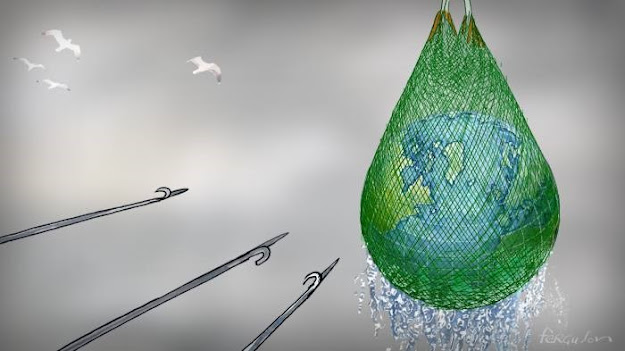
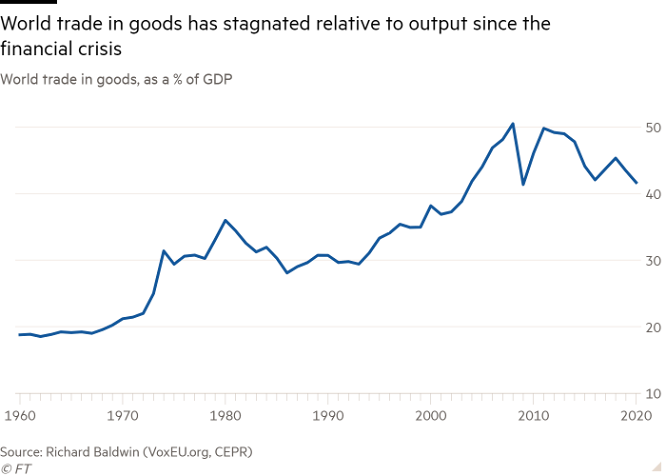
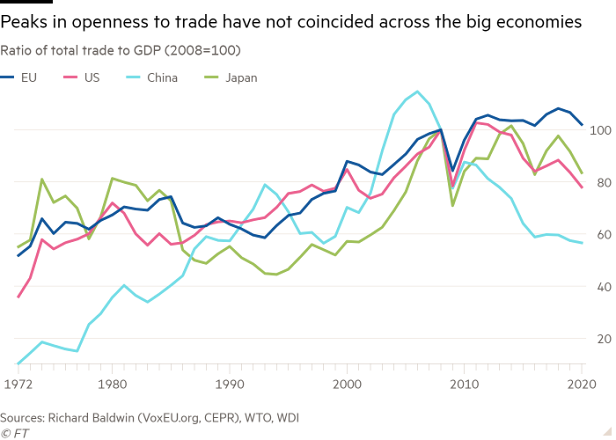

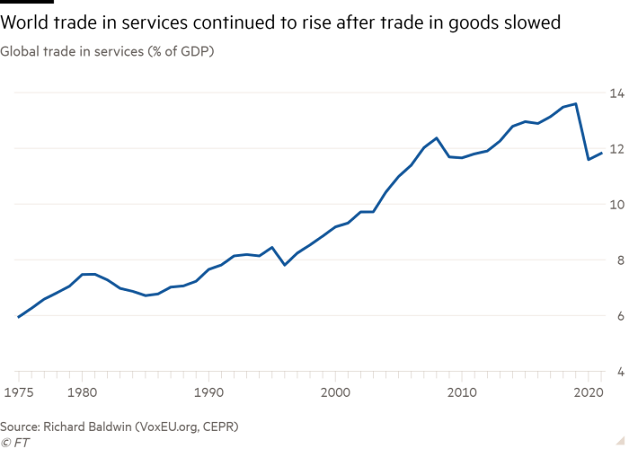
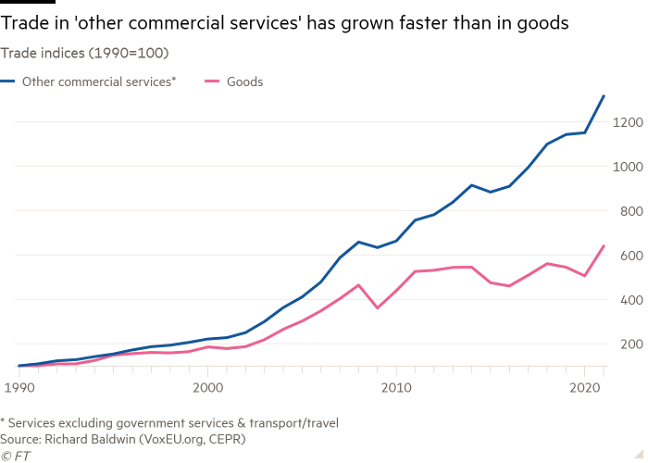
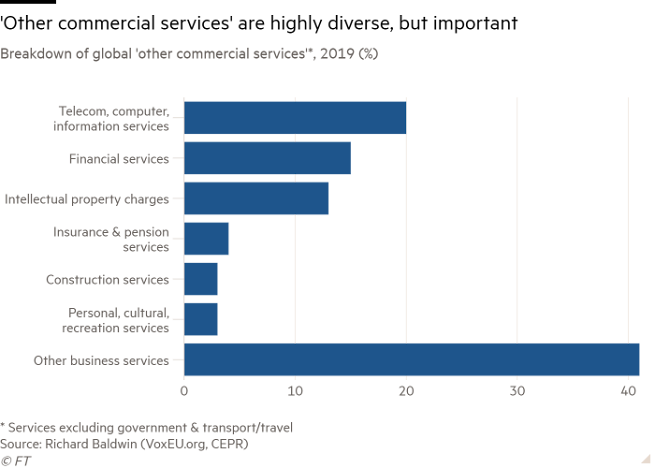
0 comments:
Publicar un comentario